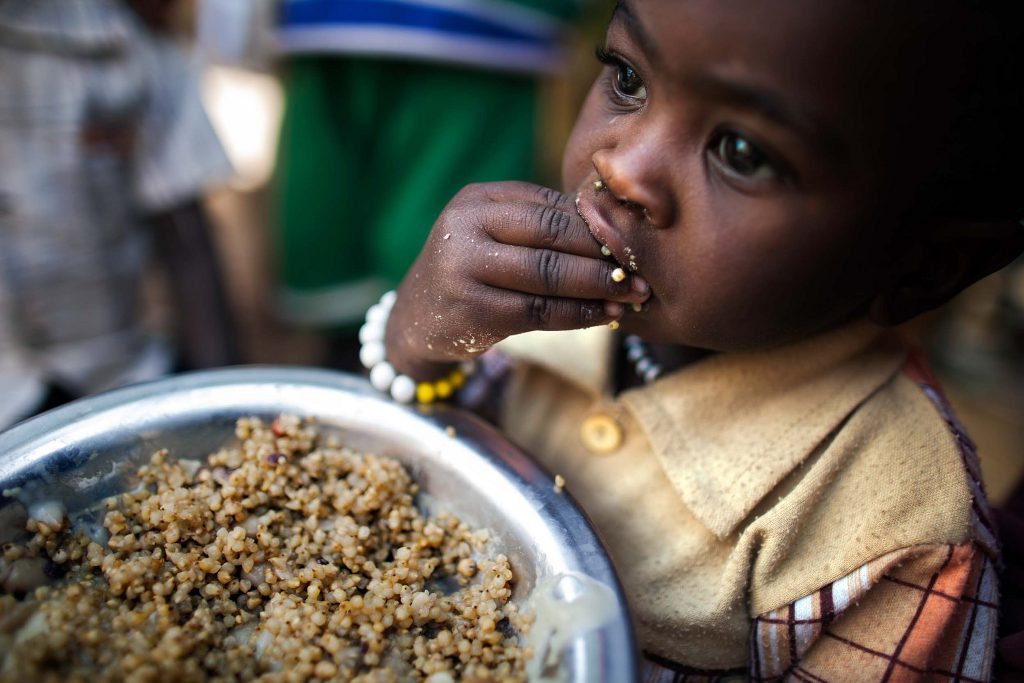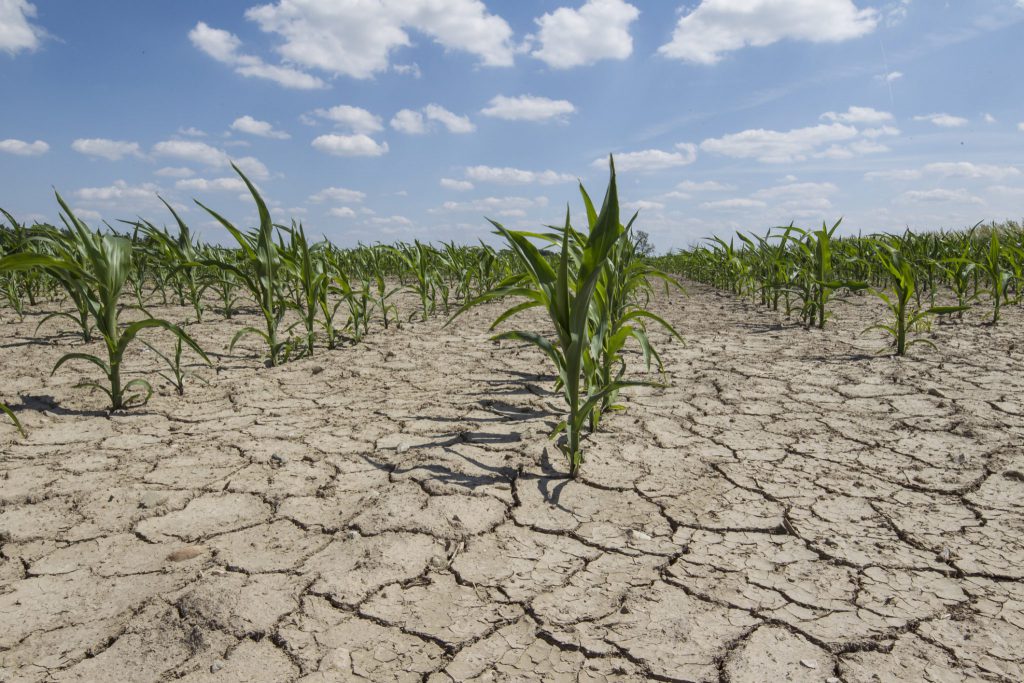Food security occurs when all people are able to access enough safe and nutritious food to meet their requirements for a healthy life, in ways the planet can sustain into the future. However, food security faces a number of challenges across both production and consumption which research will be essential to solve.
Many countries are facing the double burden of hunger and undernutrition alongside overweight and obesity, with one in three people across the globe currently suffering from some form of malnutrition, as referenced in the Global Nutrition Report 2016: From Promise to Impact – Ending Malnutrition by 2030 (IFPRI, 2016). Indeed it is not unusual to find people with different forms of malnutrition living side-by-side in one country, in one community, or even in the same household.
The prevalence rates of overweight, obesity and diet-related non-communicable diseases (NCDs) such as cardiovascular disease, stroke, certain cancers and type II diabetes, as detailed in the Insight on Overconsumption and Influences on Diet (2016), are increasing in every region, in both developed and developing countries. Globally, there are now more people who are overweight or obese than underweight, with the two combined accounting for more than half of the world population: a new normal as found in this publication from The Lancet. The estimated cost to the world economy of disease and death from overweight and obesity is $2 trillion, also detailed in the Insight on Overconsumption and Influences on Diet (2016).

At the same time, around 795 million people face hunger on a daily basis and more than two billion people lack vital micronutrients (e.g. iron, zinc, vitamin A) as published in the Global Nutrition Report 2016: From Promise to Impact – Ending Malnutrition by 2030 (IFPRI, 2016), affecting their health and life expectancy. Nearly a quarter of all children aged under five today are stunted, with diminished physical and mental capacities, and less than a third of all young infants in 60 low- and middle-income countries meet the minimum dietary diversity standards needed for growth.

Climate change will only make things worse as elevated levels of CO2 reduce the nutritional content of grains, tubers and legumes, affecting key nutrients such as zinc and iron as found in the publication Increasing CO2 threatens human nutrition – PubMed (nih.gov). The estimated impact of undernutrition on gross domestic product (GDP) is 11% every year – more than the annual economic downturn caused by the global financial crisis referenced in the Global Nutrition Report 2016: From Promise to Impact – Ending Malnutrition by 2030 (IFPRI, 2016).
A growing population means more mouths to feed. The expanding global population is getting wealthier, and richer people tend to eat more and demand food that is resource intensive to produce, particularly meat and dairy.
It has been estimated that we need to produce more food in the next 35 years than we have ever produced in human history, given the projected increases in world population, and on the basis that rising incomes will continue to change diets. However, there is by good approximation no new land for agriculture (Foresight. The Future of Food and Farming (2011) Final Project Report), with increasing competition from urbanisation (the world will be 70% urbanised by 2050), sea level rise reducing land availability, and the growing need for land for bioenergy, carbon capture and storage (BECCS) to remove greenhouse gases (GHGs) from the atmosphere. This implies sustainable intensification (SI) of agriculture on the land that is available (i.e. produce more without expanding the agricultural area).

Food production is ultimately dependent on other ecosystem services so it is essential that these are maintained. For example, agriculture uses 70% of all fresh water, produces around a third of all GHG emissions, and contributes to biodiversity loss and soil degradation (around 69% of agricultural land is degraded). If food demand continues to grow as projected, by 2050 we would need 120% more water, 42% more cropland, lose 14% more forest, and produce 77% more GHG emissions. Even with yield gap closure through SI, we would still need 56% more water, 5% more cropland, lose 8% more forest and produce 42% more GHG emissions, published in the Importance of food-demand management for climate mitigation, Nature Climate Change. It is clear that we will need to use every technology available, alongside best practice farming to sustainably increase production, but this has to be accompanied by changes to food demand including measures on both consumption and waste as detail in the report ‘How can the EU climate targets be met? A combined analysis of technological and demand-side changes in food and agriculture – ScienceDirect‘.
The Paris Agreement commits signatories to keeping the increase in global average temperature to well below 2°C above pre-industrial levels, with an aim to limit the increase to 1.5°C. Emissions across all sectors therefore need to decrease by over 80% by 2050 (AR5 Climate Change 2014: Mitigation of Climate Change — IPCC), with even greater reductions required for a 1.5°C target.
It has been estimated that on the current trajectory, the food system will account for most of the GHG emissions budget for 2°C, leaving very little space for other sectors, and making it almost impossible to meet the Paris Agreement as detailed in the Changing Climate, Changing Diets: Pathways to Lower Meat Consumption | Chatham House – International Affairs Think Tank.
Gradual climate change will alter what can be grown and where, but the variability that makes up the average temperature and rainfall will lead to climatic shocks (heatwaves, cold snaps, droughts and floods), significantly reducing yields. Our report estimates that the risk of these kinds of extreme weather events hitting multiple major breadbasket regions of the world at the same time could triple by 2040 (Extreme weather and resilience of the global food system report, Global Food Security(pdf, 3MB). This results in a loss of yield that is channelled downstream via market and policy responses into food price spikes, and in some cases civil unrest.

Climate change can also alter the distribution and severity of pests and diseases in crops and livestock and has the potential for severe impacts on food production and animal welfare. Around a third of the food produced in the world for human consumption every year gets lost or wasted, whether early in the supply chain through pests and diseases and post-harvest losses, or late in the supply chain at retail and consumption. This impacts on how much we might need to produce in the future.
A major challenge is understanding how can we re-design the food system to be healthy, sustainable, and more resilient to climate change, helping to meet both the Sustainable Development Goals and the Paris Agreement.
The Global Food Security programme brings together the major UK public funders to address these challenges, increasing coordination and collaboration on research and facilitating its translation into policy and practice.
Further reading on how this might affect the UK:

